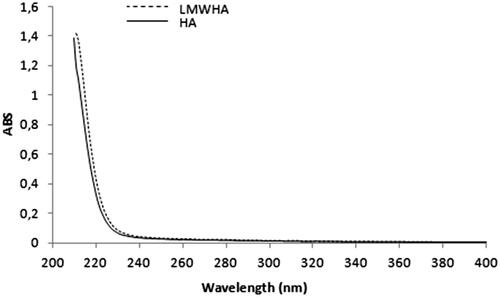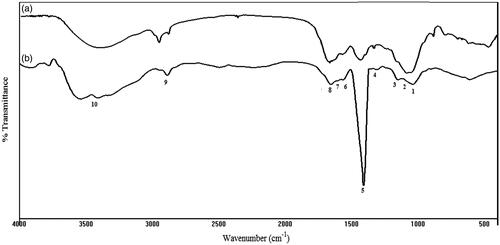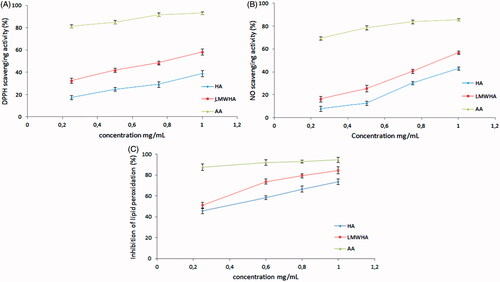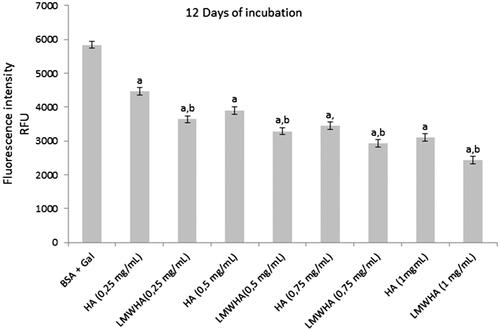Figures & data
Table 1. Chemical analysis of native and degraded hyaluronic acid.
Figure 1. Elution profiles obtained by SEC with refractive index (dotted line), viscosity (long dash line) and LS at 90° (full line) of native (black) and degraded (grey) hyaluronic acid together with molecular weights (circle) and intrinsic viscosities (triangle) in LiNO3 0.1 mol/L.
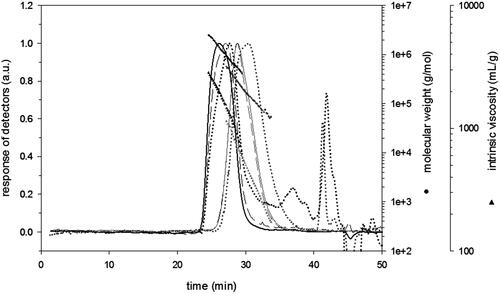
Table 2. Molecular changes of ultrasonic irradiated hyaluronic acid extracted from rooster comb.
Table 3. Assignment of IR bands for HA and LMWHA.
Figure 3. UV–vis spectra of native HA of 1090 kDa; and LMWHA of 181 kDa extracted from rooster comb.
